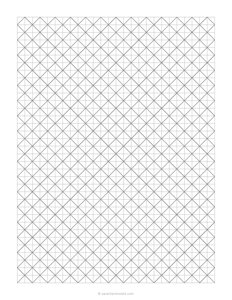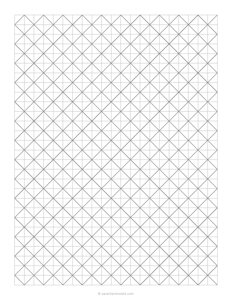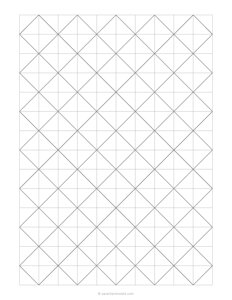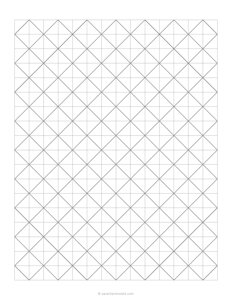Axonometric Graph Paper
Axonometric graph paper is a specialized type of graph paper that is used primarily in technical drawing and architectural design. Axonometric projections are a type of parallel projection where the object is rotated along one or more of its axes relative to the plane of projection.
Recommended: Check out this Axonometric Graph Paper Maker to create custom style printable graph papers.
Showing 1-4 of 4 records
1 cm Axonometric Graph Paper
1/2" Axonometric Graph Paper
1" Axonometric Graph Paper
3/4" Axonometric Graph Paper
Axonometric graph paper is designed to aid in creating accurate axonometric projections by providing a grid that maintains the proper scale and proportions.
Here are some key points about axonometric graph paper and its uses:
- Types of Axonometric Projections: There are several types of axonometric projections, including isometric, dimetric, and trimetric. Each of these projections has different angles of rotation for the object's axes, resulting in different perspectives. Axonometric graph paper can be designed specifically for one type of projection or may be versatile enough to accommodate multiple types.
- Accuracy and Precision: Axonometric graph paper is designed with grids that maintain accurate proportions and scale. This helps architects, engineers, and designers create drawings with precise measurements and dimensions. The grid lines are typically evenly spaced and labeled to facilitate accurate drawing.
- Architectural and Engineering Design: Axonometric graph paper is commonly used in architectural and engineering design to create detailed drawings of buildings, interiors, mechanical components, and other objects. By using axonometric projections, designers can represent three-dimensional objects in a two-dimensional drawing while preserving the relative scale and proportions.
- Visualization and Communication: Axonometric drawings are valuable tools for visualizing and communicating design ideas. They provide a clear representation of the spatial relationships between different elements of a design and can help stakeholders understand how a finished product will look.
- Education and Training: Axonometric graph paper is often used in educational settings to teach students about technical drawing, geometry, and spatial reasoning. Drawing on axonometric graph paper helps students develop skills in representing three-dimensional objects in a two-dimensional format and understanding concepts such as scale, proportion, and perspective.
- Prototype and Model Making: Axonometric drawings created using graph paper can serve as blueprints for building physical prototypes or scale models of designs. By following the dimensions and proportions laid out in the axonometric drawing, designers can accurately construct physical representations of their ideas.
In general, axonometric graph paper is a valuable for architects, engineers, designers, and students working in technical fields. It facilitates the creation of accurate and detailed drawings that effectively communicate design ideas and concepts.




